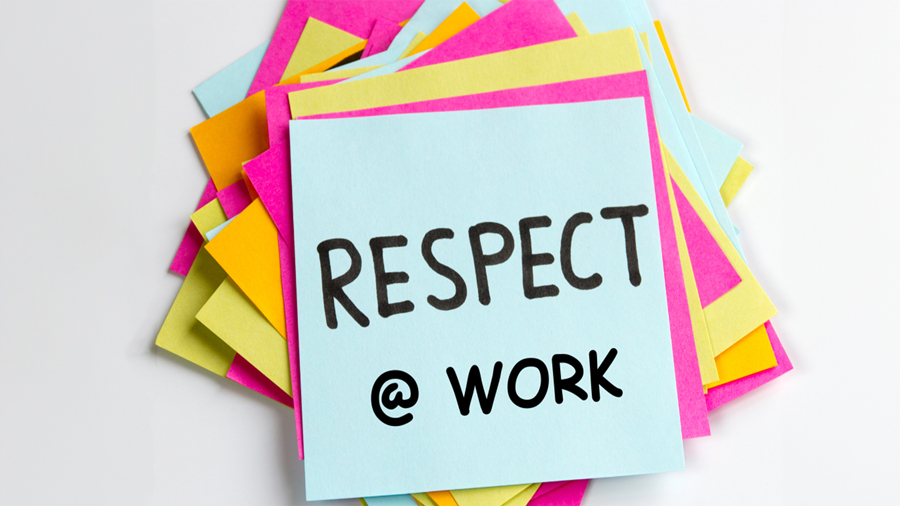We know that the Accessibility for Ontarians with Disabilities Act, 2005 (AODA) is the law. It is important to have a good understanding of the terminology used in the AODA when developing, implementing and enforcing accessibility standards within your own Organization. Government, businesses, non-profits and public sector organizations in Ontario must follow these standards.
| Accessible | Accessible refers to something that can be easily accessed or used by people with disabilities. |
| Accessibility for Ontarians with Disabilities | In 2005, Ontario passed the Accessibility for Ontarians with Disabilities Act, (AODA) calling for the development of standards for accessibility in five key areas of daily living: Customer Service, Information and Communications, Employment, Transportation, and Built Environment.
The AODA requires all organizations, both public and private, that provide goods or services either directly to the public or to other organizations in Ontario (third parties) and that have one or more workers, to provide accessible customer service to people of all ability levels. Providers must establish practices and procedures on providing goods or services to people with disabilities. |
| Accommodations (in Employment) | To take action to remove barriers to equality. To eliminate non-essential job requirements and to adapt or adjust existing job requirements or conditions, in order to enable a person to carry out the essential duties of an activity or job.
An employer must, for example, make the workplace physically accessible or otherwise enable its workers to perform the essential job duty, unless such accommodation would cause undue hardship (see “undue hardship” in this Glossary). For the worker who is blind, accommodation could mean providing a voice synthesizer on a computer; for other protected groups, it could mean altering a dress code or changing shift work to accommodate worker’s individual religious practices. |
| Adverse Impact | Discrimination which arises when an employer, service provider or property manager for genuine business reasons adopts a rule or standard which appears to be neutral, and which will apply equally to all, but which has a discriminatory effect on a particular group protected by the Code. It is discriminatory in that it imposes, because of some special characteristic of that group, obligations, penalties or restrictive conditions not imposed on other members of society. |
| Age | In employment, persons over 18 and less than 65 are protected under this ground. Persons under 18 or over 65 may file a complaint on the basis of age in other social areas, like housing or services. |
| Ancestry | Our identity based on who our ancestors were, as determined by our biological and other ties to them. |
| Attention Deficit Hyperactivity Disorder (ADHD) | Once known as Attention Deficit Disorder (ADD), since 1994 its name has been revised to Attention Deficit Hyperactivity Disorder. It is the most common psychiatric disorder in children, and affects between 2% and 5% of the adult population. It is characterized by inattention, hyperactivity and disruptive behaviour. Those with ADHD are easily distracted and have difficulty maintaining their focus on one task and following instructions. ADHD shares many symptoms with other disorders, which makes it difficult to treat. In adults, ADHD is often associated with impulsivity, substance abuse, gambling, and relationship and job difficulties. |
| Barrier | A barrier is anything that prevents people with disabilities from participating fully in society because of the disability. Barriers may be visible or invisible, physical and architectural, technology, or attitudinal. There are organizational (policy and practice) barriers, as well as information or communications barriers. |
| Citizenship | The status of the individual within the state, e.g., Canadian Citizen, Refugee, Landed Immigrant, in the country on a work, student or temporary Visa. If an employer refuses to hire people who do not have “Canadian experience”, they are contravening the Human Rights Code. |
| Colour | One’s skin colour. Complaints citing the ground of colour almost always cite the ground of race as well, and often also cite place of origin and ethnic origin. |
| Compliance
|
All workers are required to comply, both with the law (in this case, the Human Rights Code) as well as with company policies dealing with such issues as discrimination and harassment.
A worker who is found to have violated the Human Rights Code or the company’s harassment and discrimination prevention policy may be disciplined according to the severity of the actions, up to and including dismissal. |
| Creed | One’s spiritual and religious beliefs. Workers have a right to be accommodated in the practice of their creed. Workers may seek accommodation for dress code, flexible work hours, religious leaves, etc. |
| Disability | Includes any real or perceived physical disability, infirmity, malformation or disfigurement caused by bodily injury, birth defect or illness; includes developmental and learning disabilities, mental disorders, and injuries covered by WSIB (in Ontario) or workers’ compensation. Examples of disability include (but are not limited to): epilepsy, birth defects, diabetes, blindness (including use of a guide dog), deafness, psychiatric illness. |
| Discrimination | Discrimination means differential treatment of an individual or group of individuals based, in whole or in part, on one or more of the prohibited grounds of discrimination, which thus has an adverse impact on those individuals or groups. Discrimination may be intentional or unintentional, and is rooted in prejudice. |
| Employee/Worker | A person who performs work or supplies services for monetary compensation but does not include an inmate of a correctional institution or like institution or facility who participates inside the institution or facility in a work project or rehabilitation program. The terms worker and employee are both used, depending on the context. |
| Employer | A person who employs one or more workers or contracts for the services of one or more workers and includes a contractor or subcontractor who performs work or supplies services and a contractor or subcontractor who undertakes with an owner, constructor, contractor or subcontractor to perform work or supply services. |
| Equal Treatment | Not the same thing as “treating everyone the same.”
It is important to understand that equal treatment is not synonymous with identical treatment. For example, a set of stairs treats everyone identically, except that it denies equality of treatment to persons who, by virtue of disability, cannot use them. It is thus easy to see how accommodation of individuals to allow them the opportunity to participate equally in society is an indispensable feature of equal treatment. This concept of accommodation applies not just to disability, but to all prohibited grounds of discrimination. Equal treatment is only achieved after barriers to equality have been removed. |
| Essential Duties | Those duties and requirements essential for the performance of the job. For example, if a person applies for a position as a lawyer, it may not be “essential” that she or he operate a photocopier. However, if that person applies for a job in a copy shop, that duty may be “essential”. If a worker cannot perform the essential duties of the job, the employer must make efforts to accommodate the worker, short of undue hardship. |
| Ethnic Group | A group of people sharing common and distinctive racial, national, religious, linguistic, or cultural characteristics. Ethnic groups may reside primarily in one country or region, or may be more widely dispersed among a number of nations. Ethnic origin is the ground cited under human rights law when one is discriminated against because of their ethnic background. |
| Family Status | The status of being in a parent and child relationship. May also include who your parent or child is. The ground does not extend to siblings, cousins, uncles and aunts, etc. If a worker is denied a promotion she would otherwise deserve because it is assumed that her child care responsibilities would interfere with the job, this would constitute discrimination because of family status. |
| Gender | The distinction between male and female in general. |
| Gender Identity/Gender Expression | This ground is intended to protect transsexual or transgendered persons from discrimination. |
| Harassment | The definition of harassment used in the Ontario Human Rights Code and Occupational Health and Safety Act is essentially identical: “engaging in a course of vexatious comment or conduct that is known or ought reasonably to be known to be unwelcome”.
Harassment is any comment or conduct towards another which is intimidating, annoying, hurtful, or malicious. Harassment is persistent, uncalled for and unwelcome. Although harassment is usually a “course” of conduct, a single egregiously offensive comment or act may be considered harassment as well. Harassment not based on prohibited grounds of discrimination occurs as well, and Quebec, Ontario, Saskatchewan and British Columbia have moved to prohibit personal harassment in the workplace. |
| Human Rights Tribunal | In Ontario, as of June 30, 2008, all complaints under the Human Rights Code are dealt with directly by the Human Rights Tribunal of Ontario. The Ontario Human Rights Commission no longer investigates human rights complaints.
The Tribunal’s primary role is to help parties resolve complaints through mediation, and to decide those complaints where the parties are unable to resolve the complaint through mediation. In Ontario there is a new Human Rights Legal Support Centre to provide advice, support and representation for complainants, while the Commission continues to play its important public interest function. |
| Integrated Accessibility Standards Regulation (IASR) | The IASR is part of the Accessibility for Ontarians with Disabilities Act, (AODA). It requires the removal of barriers in three areas:
Information and Communications — giving people with disabilities access to more of the information we all depend on;, Employment — expanding Ontario’s labour pool and welcoming people with disabilities into more workplaces; and Transportation — making it easier for people with disabilities to get to where they need to go. Providers (including employers) are required to meet standards set out in each of these three areas to ensure equality of access for people with disabilities. |
| Marital Status | The state of being married, single, widowed, divorced or separated, or living with a person in a common law relationship, including with a same sex partner. |
| Ontario Human Rights Code (“the Code”) | The first comprehensive human rights legislation passed in Canada, in 1962, the Code today prohibits discrimination because of citizenship, race, place of origin, ethnic origin, colour, ancestry, disability, age, creed, sex/pregnancy, family status, marital status, sexual orientation, gender identity, gender expression, receipt of public assistance, and record of offence. It applies to:
· goods, services and facilities; · occupancy of accommodation (housing); · contracts; · employment; and · membership in vocational associations and trade unions. Since Ontario’s Code was enacted, all the other provinces and territories in Canada, as well as the federal government, have passed their own similar human rights laws. |
| Place of Origin | The place where one was born or raised. In Ontario, where one comes from cannot legitimately be used to deny a person a job, an apartment, or service, except in very limited circumstances where Canadian citizenship is required by law. |
| Prejudice | Literally means to “pre-judge”. It is an attitude by one person or group that tends to cast a second person or group in an inferior light, despite the absence of legitimate evidence. In this case “legitimate” means scientifically proven. In other words, prejudice is not based on proof.
Although these negative attitudes are irrational and based on misinformation, they become a way to justify mistreatment of groups of people. They become “socially acceptable”. The negative attitudes then form a vicious circle, recycling through society as a form of education. In this way, for example, misinformation about people of colour becomes a part of everyone’s ordinary assumptions. |
| Race | Not defined in the Human Rights Code. Generally understood to refer to people distinguishable by certain genetic and/or physical characteristics, such as skin colour. |
| Record of Offences | In Ontario, a conviction for which a pardon has been granted under the Criminal Records Act and not revoked, or any conviction for an offence under provincial law.
A company may not refuse to hire a person who was convicted for a minor drug possession charge twenty years ago, if that person has obtained a pardon. |
| Sexual Orientation | This term normally refers to homosexuality, bisexuality, and heterosexuality. It is considered “an immutable personal characteristic that forms part of an individual’s core identity.” |
| Supervisor | A person who has charge of a workplace or authority over a worker. Generally this would include those with a position title such as Director, Manager or Supervisor, as well as any other management type position, or those in a temporary supervisory position. |
| Telephone Teletype (TTY) | A TTY is a telephone with a keyboard and a small screen that is used by people who are deaf, and some people who are deafened or hard of hearing to communicate via telephone using a text-based system. |
| Undue Hardship (The Employer) | When accommodating the needs of an individual or a protected group (such as people with disabilities) would alter the essential nature of the enterprise, substantially affect the economic viability of the enterprise, or produce a substantial health and safety risk that outweighs the benefit of accommodating that group or individual worker, then an employer can make the case that the accommodation causes undue hardship. The employer has the burden of proving that accommodating a worker would cause undue hardship for the business. |
| Voice Recognition Systems | Voice Recognition Systems are computer software programs that enable people to control their environment, including computers, by voice instead of a mouse or keyboard. |
| Workplace | Any building or part of a building in which one or more workers work, including lunchrooms, changing and lounge areas, and any vehicle or conveyance, or any area including outside worksites/remote locations, where workers engage in business and/or related social functions. In some instances, harassing or discriminatory behaviour which occurs outside of the physical workplace but adversely affects relationships in the work environment.c |
Useful Resources
Accessibility for Ontarians with Disabilities Act, 2005
Ministry of Economic Development, Trade and Employment
Understanding accessibility and disabilities:
The abilities.ca website is an opportunity for people with disabilities and the broader community to engage in dialogue around issues that matter to all of us.
HR Proactive is committed to increasing knowledge an awareness of accessibility for persons with disabilities.











